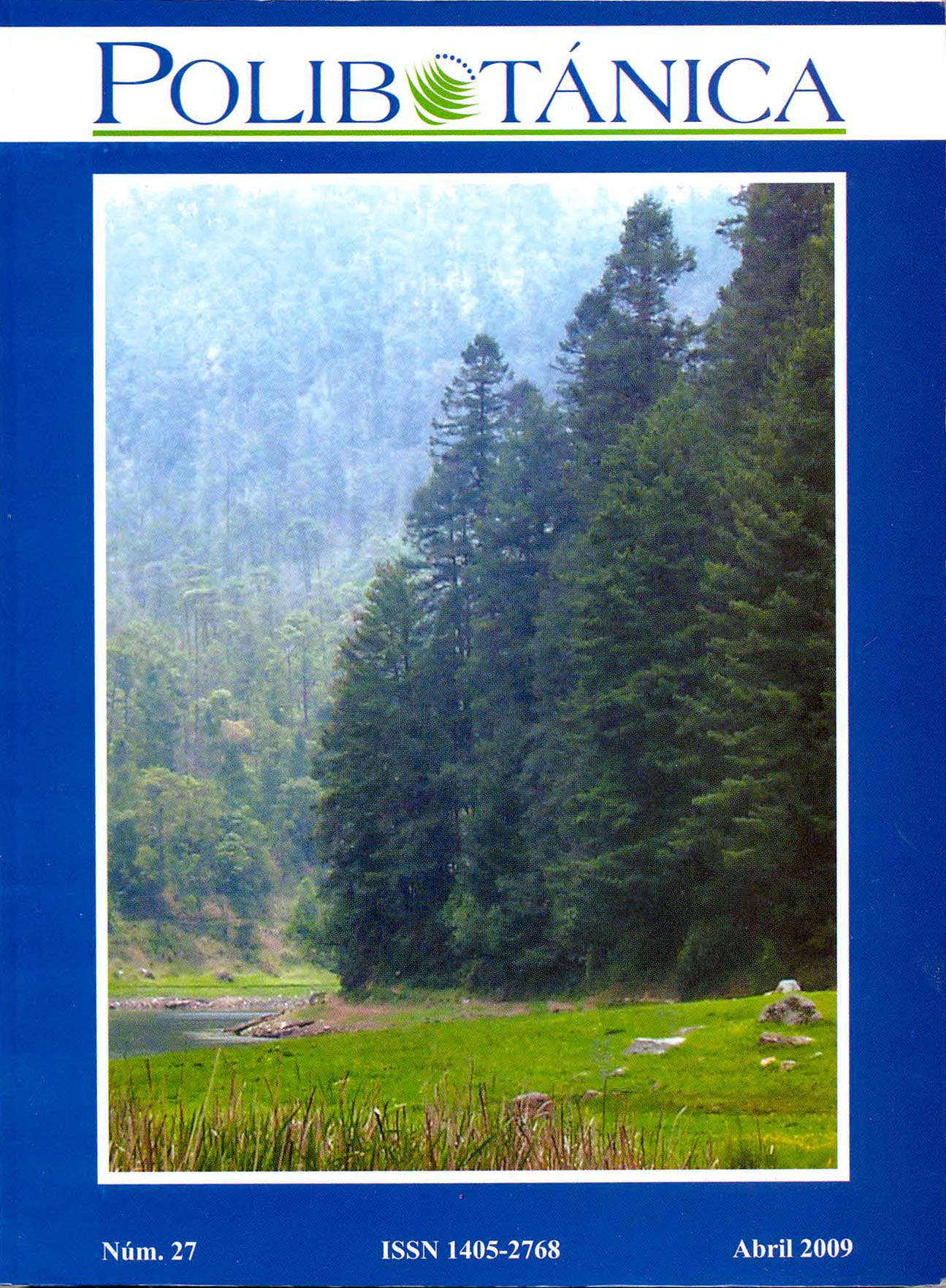CAMBIOS EN LA ESTRUCTURA Y COMPOSICIÓN DE LA VEGETACIÓN RELACIONADOS CON LOS AÑOS DE ABANDONO DE TIERRAS AGROPECUARIAS EN LA SELVA BAJA CADUCIFOLIA ESPINOSA DE LA RESERVA DE DZILAM, YUCATÁN
Abstract
The dry forests in the northern Yucatan
Peninsula are highly important not only for
science but also for the conservation of biodiversity because of their unique biogeographical and ecological characteristics. The
combination of arid climate, stony soil and
relative isolation from other biogeographical regions, has resulted in their sheltering
an important proportion of the peninsula’s
endemic taxa. Nevertheless, this region
suffers from such human pressures as cattle
ranches and the exploitation of limestone
banks. This scenario makes it necessary to
describe the ecological changes on the land
once it has been abandoned after being used
for agriculture, because there is no pristine
forest in Yucatan. We compared the structure and composition of trees and shrubs
on abandoned agricultural land of different
ages. All sites were derived from tropical
dry forest, a vegetation type which contains
several endangered species. The changes
in composition and relative abundance of
the subfamilies belonging to the Leguminosae (Papilonoideae, Mimosoideae and
Caesalpinoideae) were also reported, since
this family was the most abundant at the
study site. Average tree height and density
and shrub richness showed larger changes
with increasing number of years without
management (ANOVA, P< 0.05). Younger
plots (1-5 years and currently in use) were
more similar among themselves than to older sites (more than five and more than ten
years). The Leguminosae were the richest
family in species in all the plots and one
of the most abundant, possibly indicating
a history of intense use. Agriculture tends
to deplete nitrogen from the soil, which
gives a competitive advantage to legumes.
Papilonoideae were the most abundant in
older sites (more than five and more than
ten years), whereas Mimosoideae dominated recently abandoned sites (five years or
less) and those currently in use. Metopium
brownei, Bursera simaruba and Plumeria
rubra were the most abundant species in the
oldest site. The first two are found in almost
all types of terrestrial vegetation on the Yucatan Peninsula, and all three are reported
as being very resistant to disturbance, such
as fire or damage associated with wood
harvest, and to regenerate readily. Their
presence may indicate a history of intense
use of this region.
Downloads
Published
Issue
Section
License

Polibotánica by Departamento de Botánica de la Escuela Nacional de Ciencias Biológicas del Instituto Politécnico Nacional se distribuye bajo una Licencia Creative Commons Atribución-NoComercial-CompartirIgual 4.0 Internacional.




















